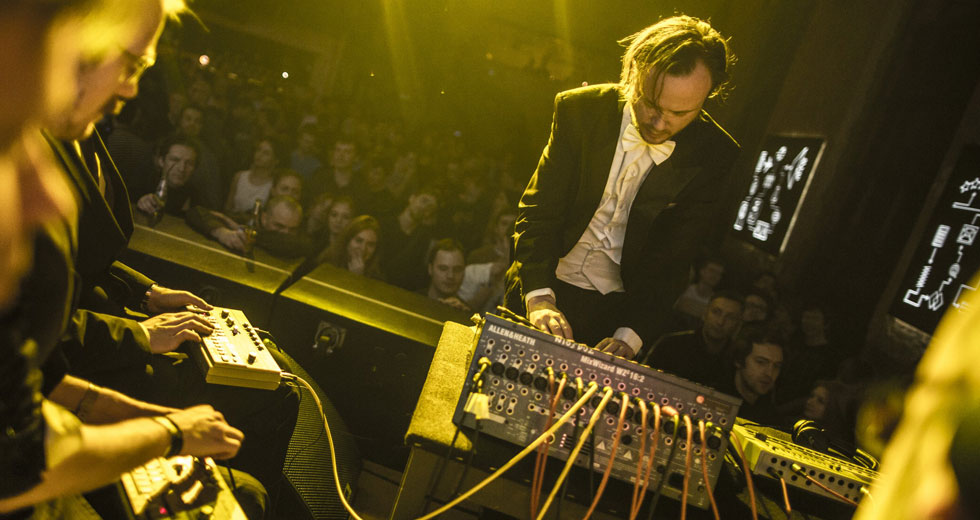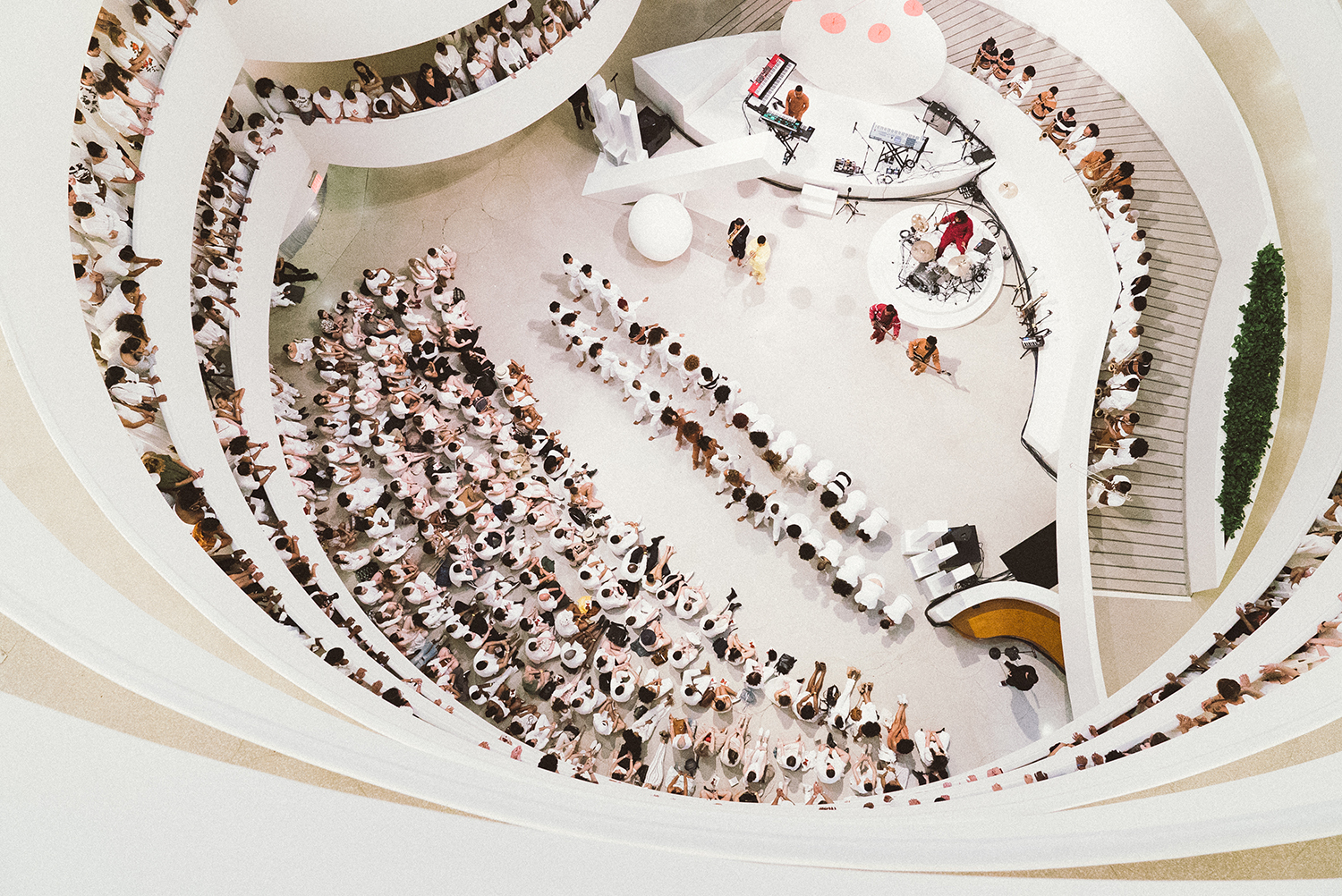When Malcolm Cecil Met Stevie Wonder
Although he initially made his name in the British jazz scene, Malcolm Cecil was a key figure in the development of the synthesizer and his best-known work was made in collaboration with soul legends. In this condensed and edited excerpt from his lecture at the 2013 Red Bull Music Academy, Cecil explains how he went from a synth engineer to recording with one of Motown’s biggest artists in 1971.
At some point, I became an engineer at Media Sound. This is where the first part of TONTO came in, because when I first walked in there, there was this synthesizer, a big Moog 3C sitting in the iso-booth of Studio A. I thought, “Oh, this is great, I’ll get to mess around with this thing.” I spent a lot of time looking at it and it had an ignition switch on it, to turn the power on and off. I thought, “That’s very interesting,” and I made some enquiries and found out it didn’t belong to the studio. It belonged to this guy Bob Margouleff, who apparently only showed occasionally and very late at night.
Well, that was my time, I would come in at five and work. I’m working on the console in Studio A one night, and about five nights after I started work this guy walks in with a fur coat on. It’s winter, and he’s got this hair down to his rear end, really long, long hair. Now I had wide hair, he had long hair. He walks in and I realised straight away this must be Bob Margouleff. So I say, “You must be Bob Margouleff.” “Yes, that’s right, and you must be the new maintenance engineer.” We had heard about each other.
He says, “Tell me, do you know how to run this?” And he points to the board, which I’ve got half open. I say, “Well, I’d better. I have to fix it.” He says, “Nobody ‘round here will show me how to run this thing. Will you show me how to run it?” I looked at him and I said, “Do you know how to run that thing?” And I pointed to the Moog. He says, “I’d better. I own it.” I said, “I’ll tell you what, I’ll show you how to run this and you show me how to run that.” He sticks his hand out and he says, “Deal,” and we shook on it and that’s how we started in partnership.
I said, “I’ll tell you what, I’ll show you how to run this and you show me how to run that.”
We started that night and started trying to record things and it was all experimental. It wasn’t until six months that later that Herbie Mann, who I’d played with at Ronnie Scott’s, walked in the door and saw me standing there. “Oh, what are you doing here? Malcolm from Ronnie Scott’s, right?” “Yeah, I’m here now.” “What are you doing?” “I’m maintenance engineer at the studio. What are you doing here?” He said, “I’ve come to check on my group that’s recording downstairs in Studio B.” I said, “Oh, that’s the 16-track studio I just installed. After you’ve finished with your group downstairs, maybe you want to come up and check out this stuff I’m doing on synthesizer.” He goes, “Synthesizer? Synthesizer, you?” Because I was a real purist when he knew me in England. I said, “Look, don’t knock it ‘til you’ve heard it.”
He did come up and I played him the first track, which was a track called “Aurora,” which was the first thing that we had ever tried to put together on synthesizer that first night, Bob and I. I sort of put dim lighting on in the studio and everything and invited him in and sat him down and played him this.
“Why are there 12 semitones in an octave? What are these numbers? Why do they work?”
Basically, this piece is an experiment. Can you hear this glide tone coming down? The musical question is, “How many intervals are there in an octave?” It has other levels, spiritual levels, but musical tones it’s about... Listen, it’s still going down. We finally reach the octave. It does it three times, the piece, once up, twice down. This is the type of thing I was talking about, this is experimental music, we’re experimenting and the idea was, “Why are there 12 semitones in an octave? Why does that scheme work? Why pentatonic scales? Why not sexatonic scales? What are these numbers? Why do they work?” Well, I did find out. Then it sort of bursts through and we get into artistic licence and so on. But that’s the basic principle of this piece.
Anyway, Herbie liked it, turned round and said there and then, “Do you want a record contract?” And I said, “Really?” He said, “Yeah, I’ve got three out of my four groups, do you want to be the fourth group?” That’s how the Tonto’s Expanding Head Band album got to be released. Three months after Expanding Head Band was released, Ronnie, a friend of mine, was subbing on bass in Stevie Wonder’s band and he took the album along and told Stevie it was a keyboard instrument and played it to him.
Now, Stevie turned 21 on the 13th May, 1971. On Memorial Day weekend, which is the end of May, I’m in the apartment allocated to me by the studio, which is on the third floor of the studio, right over the studio, so I’m there 24/7 in case anything goes wrong. It was part of the gig, part of the job, the apartment went with it. I get a ring on the bell. I look out: there’s my friend Ronnie and a guy that turns out to be Stevie Wonder in a green, pistachio jumpsuit and what looks like my album under his arm. Ronnie says, “Hey, Malcolm, got somebody here who wants to see TONTO.”
The first thing Stevie asks is, “Is it a keyboard instrument?” “Well, yes, sort of.”
Being the chief engineer of the studio, I’ve got the keys. The studio’s closed, it’s Memorial Day weekend. I go down there and it’s Stevie and I get introduced and basically he says he wants to see the synthesizer. I realise he doesn’t mean see literally, he means put his hands on it. The first thing he asks is, “Is it a keyboard instrument?” “Well, yes, sort of.” He wanted a clarification on “sort of.” I took him down into the studio and we opened up and I showed him the synthesizer, you know, put his hands on it and so on.
You can only play one note at a time, it’s like a saxophone or a trumpet. Of course, being a keyboard player, Stevie puts a whole fistful of notes down and says, “Oh, this doesn’t work, something’s broken.” “No, Stevie, it doesn’t work that way.” I tried to explain to him how it worked and he sort of got it. Then he said, “Well, got a piano?” Yeah, we’ve got this grand piano here. “Oh, cool, can we record?” “Yeah, I suppose so.” So I go up, I get my test tape. I’m not going to break out a new tape, I don’t have any authorisation to do that, but I’ve got my test tape. So I go up and get my 2-inch test tape, put it on and we start recording.
Well, that weekend we did 17 songs. At first he wanted me to play upright bass on them. The first two I tried and it didn’t sound right to me. I said to him, “It’s the wrong sound, it’s taking it to a jazz place. This music is not jazz, this sounds to me more like R&B than jazz. It wants a different sort of bass sound.” He said, “Can you get it?” I said, “I can get it on the synthesizer.” So we got up the bass sound on the synthesizer and he really loved it.
One of them I remember was definitely “Evil,” which did come out and was published. But when I left Stevie four years later, we had published maybe 50 songs and there were another 250 unreleased in the can that I gave back to him, some of which were released on various albums since then.

